List of men's national association football teams
This is a list of the men's national association football teams in the world. There are more nations with football teams than for any other sport,[1] with teams representing 191 of the 193 UN member states, as well as several dependent territories, sub-national entities, and states who are not members of the United Nations. This list divides teams into two main groups:
- Teams which are either members of Fédération Internationale de Football Association (FIFA), the world's football governing body (211 teams), or have membership in a FIFA-affiliated continental confederation without being members of FIFA (12 teams).
- Teams who are not members of FIFA or any continental federation, but which represent sovereign states. This group includes United Nations members and observer states, as well as states who are not members of the UN (11 teams).
This list excludes other teams, which generally play outside FIFA's recognition. Excluded teams include those who represent ethnic groups, sub-national entities, separatist movements, and pseudo- or micro-nations.
Members of FIFA affiliated confederations

This section lists the current:
- 211 men's national football teams affiliated to FIFA, through their national football associations.
- 12 men's national football teams who have membership in one of FIFA's affiliated continental confederations, but are not members of FIFA.[2]
FIFA members are eligible to enter the FIFA World Cup and matches between them are recognized as official international matches. Based on their match results over the previous four-year period, the FIFA World Rankings, published monthly by FIFA, compare the relative strengths of the national teams.
Some national teams who are members of a confederation but not FIFA members compete in confederation-level and subregional tournaments. These teams, however, are not allowed to participate in the World Cup.
The six confederations are:
- Asia – Asian Football Confederation (AFC)[note 1]
- Africa – Confederation of African Football (CAF)[note 1]
- North and Central America and the Caribbean – Confederation of North, Central America and Caribbean Association Football (CONCACAF)
- South America – Confederación Sudamericana de Fútbol (CONMEBOL)
- Oceania – Oceania Football Confederation (OFC)
- Europe – Union of European Football Associations (UEFA)
FIFA runs the World Cup as a tournament for national teams to find the world champion. Each confederation also runs its own championship to find the best team from among its members:
- AFC – AFC Asian Cup
- CAF – Africa Cup of Nations
- CONCACAF – CONCACAF Gold Cup
- CONMEBOL – Copa América
- OFC – OFC Nations Cup
- UEFA – UEFA European Football Championship
The Union of Arab Football Associations (UAFA) organizes football tournaments between Arab League member nations.[3] All 22 national governing bodies that form UAFA are also members of both FIFA and either the AFC or CAF (though the Palestine national team was a UAFA member for many years before being allowed to become a member of FIFA and the AFC). National teams from UAFA member countries are noted in the list below. The Arab Nations Cup is the top championship tournament for national teams organized by UAFA.
The Confederation of Independent Football Associations (ConIFA) is an organization for teams representing unrecognised states, subnational regions, and stateless minorities, as well as teams from recognised states that have not managed to gain entry into FIFA. ConIFA is a successor to the Nouvelle Fédération-Board (N.F.-Board), which also organized tournaments for non-FIFA member teams. While none of the current ConIFA members are also members of FIFA, a few hold associate membership in one of the confederations affiliated with it. These teams are also noted in the list below.[4] The ConIFA World Football Cup is the top tournament for ConIFA member nations.
AFC (Asia)
Due to the geographical size of Asia, the AFC is subdivided into five sub-federations:
- West Asian Football Federation (WAFF) – represents countries at the western extremity of the continent, except Israel.
- East Asian Football Federation (EAFF) – represents nations in East Asia, plus Guam and the Northern Mariana Islands.
- Central Asian Football Association (CAFA) – represents countries in Central Asia, comprising Afghanistan, Iran, and most of Soviet Central Asia, except Kazakhstan.
- South Asian Football Federation (SAFF) – represents countries in South Asia.
- ASEAN Football Federation (AFF) – represents countries in Southeast Asia, plus Australia.
- 1: National governing body was formerly a member of OFC (1966–2006)
- 2: National governing body is a member of UAFA
- 3: Official name used by FIFA and AFC for People's Republic of China
- 4: Official name used by FIFA and AFC for Republic of China (Taiwan); national governing body was a member of OFC from 1975 to 1989
- 5: Official name used by FIFA and AFC for Islamic Republic of Iran
- 6: Official name used by FIFA for Democratic People's Republic of Korea; official name used by AFC is DPR Korea
- 7: Official name used by FIFA and AFC for Republic of Korea
- 8: Official name used by FIFA and AFC for Kyrgyzstan
- 9: National governing body is a full member of AFC but not a FIFA member
- 10: National governing body was formerly a member of OFC (2005–2009)
- 11: Official name used by FIFA and AFC for national team representing the Palestinian Territories
CAF (Africa)
Due to the geographical size of Africa, CAF is divided into five regional federations:
- Council for East and Central Africa Football Associations (CECAFA) – represents nations generally regarded as forming the regions of East Africa and some nations of Central Africa.
- Council of Southern Africa Football Associations (COSAFA) – represents nations generally regarded as forming Southern Africa, as well as island states off the coast of Southern Africa.
- West African Football Union/Union du Football de l'Ouest Afrique (WAFU/UFOA) – represents nations in West Africa.
- Union of North African Federations (UNAF) – represents nations regarded as forming North Africa.
- Union des Fédérations du Football de l'Afrique Centrale (UNIFFAC) – represents some of the nations that form Central Africa.
- 1: National governing body is a member of UAFA
- 2: Official name used by FIFA for Democratic Republic of the Congo; official name used by CAF is RD Congo
- 3: National governing body is an associate member of CAF, but not a FIFA member
- 4: National governing body was a full member of CAF briefly during 2017
- 5: National governing body is a member of ConIFA. Was previously a member of the N.F.-Board.
CONCACAF (North, Central America, and the Caribbean)
The CONCACAF federation is divided into three regional federations that have responsibility for part of the region's geographical area:
- Caribbean Football Union (CFU) – represents all 27 nations in the Caribbean, plus Bermuda and three nations in South America.[note 2]
- North American Football Union (NAFU) – represents the two countries in Northern America and Mexico.
- Union Centroamericana de Fútbol (UNCAF) – represents the seven countries in Central America.
- 1: National governing body is a full member of CONCACAF but not a FIFA member
CONMEBOL (South America)
OFC (Oceania)
Note: ![]() Palau has been listed as an associate member of the OFC in the past, but it is unclear whether it is still associated with the confederation.[5] Palau is not a FIFA member.
Palau has been listed as an associate member of the OFC in the past, but it is unclear whether it is still associated with the confederation.[5] Palau is not a FIFA member.
UEFA (Europe)
National teams not affiliated to FIFA confederations
The national football teams included in this section are not members of FIFA, or of any of its affiliated continental confederations. The teams are not eligible to enter the FIFA World Cup or any continental confederation championships. FIFA's statutes do not allow member teams to compete against these sides without FIFA's prior permission.[6] Several national associations for teams included in this section are members of ConIFA; these are indicated in the lists below.
This section lists:
- 5 teams representing sovereign states who are members or observers of the United Nations.
- 7 teams representing states which are not members of the United Nations.
Unaffiliated United Nations states
There are seven United Nations member and observer states which are not members of FIFA or any of its affiliated continental confederations. Five of them, however, have fielded national association-organised teams in unofficial friendly matches or in tournaments held outside the auspices of FIFA. These teams are listed below.
1: Senior national football teams representing the United Kingdom have only played unofficial friendly matches (usually under the name "Great Britain", though there have also been "Rest of the United Kingdom" representative teams). Otherwise, the UK is represented in FIFA- and UEFA-organized football by the teams of its constituent countries: England, Northern Ireland, Scotland, and Wales (these teams are listed in the UEFA subsection above). Teams representing the entire kingdom have also competed in the Summer Olympics and participate regularly at the Summer Universiade. See also UK national football teams.
2: Official name used by the Pacific Games Council for Micronesia.[7]
3: National governing body is a member of ConIFA. Was previously a member of the N.F.-Board.
4: Listed as associate member of the OFC in 2002 and again in 2006. It is unclear whether Palau is still associated with the confederation.[8]
Two other UN member states (the Marshall Islands and Nauru) have never fielded a national association-organised football team, though there are reports that amateur football teams claiming to represent the latter have participated in local friendly matches on at least two occasions.[9][10]
Unaffiliated non-UN states
Three states with limited international recognition and no UN membership are members of both FIFA and an affiliated confederation and are therefore listed above: the Republic of China (as Chinese Taipei), Kosovo, and Palestine. Both the Cook Islands and Niue are associated states with no UN membership; both are members of the OFC (though Niue only in an associate capacity), while the Cook Islands are also FIFA members. These two states are also listed above.
A further seven de facto or partially recognized states with no UN membership have fielded football teams in non-FIFA football tournaments or unsanctioned friendly matches.[11][12][13][14][15] None of these states, however, are members of FIFA or any of its affiliated continental confederations. The national associations representing all of these teams are members of ConIFA.[4]
1: As of September 2019, the ConIFA world rankings designate the team representing the Republic of Artsakh by its former name, Nagorno Karabakh.[16] The team participated in the 2019 ConIFA European Cup as Artsakh.[17]
2: In addition to playing in non-FIFA football tournaments and in unofficial matches against FIFA-affiliated nations, Northern Cyprus participated in the 1980 Islamic Games football competition.
3: The Transnistria national team, while a member of ConIFA,[18] has only played against club teams so far.
4: Was previously a member of the N.F.-Board.
Membership criteria of FIFA and affiliated confederations
Historically, the majority of FIFA and confederation members have been sovereign states with wide diplomatic recognition. Exceptions to this rule have included the British Home Nations (due to their seminal role in the development of football), Palestine (accepted into FIFA after the creation of the Palestinian National Authority),[19] the Republic of China (which does not enjoy wide recognition but is still accepted as representative of the Taiwan area), and certain dependent territories, autonomous areas, and protectorates which, on the grounds of their political autonomy, separate status, and/or distance from their parent state, have been allowed to hold membership in FIFA and/or one of its affiliated confederations. At present, FIFA members include 23 subnational and dependent territories, as well as three states with limited international recognition.[note 3] A further ten overseas, dependent, and autonomous territories with close ties to a sovereign state do not have membership in FIFA, but are members of one of its affiliated confederations.
In 2016, FIFA made changes to its statutes to define 'country' as "an independent state recognized by the international community".[20] The statutes further specify that a non-independent region can become a member with the authorization of the national association of the country where it is located.[21] In 2011, UEFA had already changed its statutes so that only countries recognised as independent states by the United Nations could join the organization.[22] Nonetheless, the associations of Kosovo (a state with limited recognition whose sovereignty is disputed by Serbia) and Gibraltar (a British dependent territory claimed by Spain), neither of whom have separate UN membership, were accepted into both FIFA and UEFA in 2016.[23][24] Conversely, the application of the British crown dependency of Jersey to join UEFA was rejected in 2018, on the grounds of it not being a sovereign country as defined by the UN.[25] Similarly, the Dutch special municipality of Bonaire was rejected for membership of FIFA in 2019 (despite having its own membership in CONCACAF), since FIFA regards it as being under the auspices of the Netherlands football federation.[26]
Separatist, subnational, and ethnic teams
Beyond this list, a variety of teams representing national, separatist, sub-national, ethnic, and diaspora groups have been formed. There are also several teams representing dependent territories who do not have their own membership of neither FIFA nor a continental federation. These teams often play in international tournaments against each other, and in some cases in unsanctioned friendly games against FIFA members (for example, teams representing specific Spanish autonomous communities play occasional friendly matches against FIFA-affiliated national teams).[27] Some subnational and dependent territory teams with no FIFA membership participate in regional football tournaments against FIFA or UN member nations (for example, the Mayotte and Reunion teams at the Indian Ocean Island Games or individual Micronesian state teams at the Micronesian Games). UEFA organizes the UEFA Regions Cup between amateur regional teams from Europe.
The Confederation of Independent Football Associations (ConIFA), was founded with the aim of regularising non-FIFA international football, by having a two-year international tournament cycle, with the ConIFA World Football Cup in even numbered years, and continental tournaments in odd-numbered years.[28] This developed the work of the now-defunct N.F.-Board (Nouvelle Fédération-Board), founded in 2001, which also organized football tournaments between FIFA-unrecognised teams.[29] ConIFA aims to help unrecognised national teams gain recognition, but also to provide a platform for representative teams of regions or diasporas, which do not have a place in a system of international football based on nation-states.[30] ConIFA is not the only body dedicated to organising football tournaments between non-FIFA national teams; other initiatives include the Island Games football tournament, the now-defunct Coupe de l'Outremer for French overseas territories, and the CSANF competitions between (mostly) South American regional and ethnic communities, among others.
In some cases, participation in football tournaments organized outside the purview of FIFA and its affiliated confederations has been a first step for teams who later achieved FIFA membership. For example, the team representing Arab Palestine played in tournaments such as the Arab Nations Cup and the Pan Arab Games for decades before being admitted into FIFA and the AFC. The Faroe Islands national team played in the Island Games football tournament before being admitted into FIFA and UEFA, while the Kosovo national team played in some tournaments for unrepresented teams before joining those same organizations. Gibraltar played in a variety of tournaments against both FIFA- and non-FIFA representative teams before joining FIFA and UEFA.
Former national football teams
These national teams no longer exist due to the dissolution of the nation or territory that they represented. Only national teams that were once members of FIFA are listed below.
| Preceding team | Successor team(s) (inherited position/results) |
Other successor team(s) | Notes |
|---|---|---|---|
| Represented Czechoslovakia until its dissolution into the Czech Republic and Slovakia in 1993.[32] Competed as Representation of Czechs and Slovaks for the remainder of their 1994 World Cup qualifying games.[33] | |||
| Represented the Saarland Protectorate from 1950 to 1956 before its union with the Federal Republic of Germany.[34] | |||
(officially Germany FR) |
Represented West Germany between 1950 and 1990, before reunification with East Germany.[35] Was considered a continuation of the team that had represented the German state prior to 1942.[36] | ||
(officially Germany DR) |
Represented East Germany between 1952 and 1990, before reunification with West Germany.[35] | ||
| Represented Ireland from 1882. From 1922, when the Irish Free State (later Republic of Ireland) left the United Kingdom, until 1953, it continued to pick players from across the Island of Ireland, before becoming restricted to players solely from Northern Ireland under pressure from FIFA.[37] | |||
| Represented the Federation of Malaya from 1953 until its union with Sarawak, North Borneo and Singapore to form Malaysia in 1963. Singapore, which gained independence in 1965, retained its preexisting national team. | |||
| Represented Tanganyika until its union with Zanzibar as Tanzania in 1964. Zanzibar is an associate member of CAF and so is not a member of FIFA. | |||
| Represented the British Mandate for Palestine from 1934 until the formation of the State of Israel in 1948, after which its place in FIFA was given to the Israel national football team. A team representing the Palestinian territories was formed in 1953 and was admitted into FIFA in 1998. | |||
(officially Vietnam) |
Represented South Vietnam from 1949 until 1975. North and South Vietnam maintained separate football teams from 1954 to 1975 (see North Vietnam national football team for information on the North Vietnam team). The current Vietnam national football team is considered a successor of the South Vietnam team as North Vietnam was not a FIFA member. | ||
(officially Yemen AR) |
Represented North Yemen from 1965 until its union with South Yemen in 1990. | ||
(officially Yemen PDR) |
Represented South Yemen from 1965 until its union with North Yemen in 1990. | ||
| Represented the United Arab Republic from 1958 to 1961 until the secession of Syria. Was considered a continuation of the previous Egypt national football team, which became its successor team. The team continued to be known as the United Arab Republic until 1970. | |||
| Represented the Soviet Union from 1940 until its dissolution in 1991. This was considered a continuation of the team that had previously represented the Russian Empire. Teams representing Estonia, Latvia and Lithuania had all been active independently prior to their incorporation into the Soviet Union in 1940. | |||
| Represented the Commonwealth of Independent States and Georgia from January 1992 until the end of the Euro 1992 tournament, in order to take the Soviet Union's place in that competition. | |||
| Represented Yugoslavia between 1920 and 1992, before the dissolution of the Socialist Federal Republic of Yugoslavia into Bosnia-Herzegovina, Croatia, Federal Republic of Yugoslavia, Macedonia and Slovenia | |||
(later renamed Serbia and Montenegro) |
Represented the Federal Republic of Yugoslavia, known as Serbia and Montenegro after 2003, from 1992 until its dissolution into Serbia and Montenegro in 2006. Kosovo declared independence from Serbia in 2008, and its national team was accepted into UEFA and FIFA in 2016. | ||
| Aruba became a separate nation in 1986 and was recognized by FIFA in 1988. The former team represented the Netherlands Antilles until the dissolution of the country in 2010. Formerly known as "Curaçao", this name was restored in March 2011 when the new constituent country of Curaçao was given the Netherlands Antilles' place in FIFA and CONCACAF. The teams representing the former Netherlands Antilles territories of Bonaire and Sint Maarten are full members of CONCACAF, but not of FIFA. Two other former Netherlands Antilles territories (Saba and Sint Eustatius) have fielded national teams in unofficial friendly matches in the past, but neither has membership of FIFA or a continental federation.[38] |
New names
In addition to the above, other nations have been renamed:
 Belgian Congo →
Belgian Congo → .svg.png.webp) Congo-Léopoldville in 1960 →
Congo-Léopoldville in 1960 → %253B_Flag_of_the_Democratic_Republic_of_the_Congo_(1964%E2%80%931966).svg.png.webp) Congo-Kinshasa in 1963 →
Congo-Kinshasa in 1963 →  Zaire in 1971 →
Zaire in 1971 → .svg.png.webp) DR Congo in 1997
DR Congo in 1997 British Gambia →
British Gambia →  Gambia in 1965
Gambia in 1965.svg.png.webp) British Guiana →
British Guiana →  Guyana in 1966
Guyana in 1966.svg.png.webp) Burma →
Burma → .svg.png.webp) Myanmar in 1989
Myanmar in 1989 Cambodia →
Cambodia →  Khmer Republic in 1970 →
Khmer Republic in 1970 →  Kampuchea in 1975 →
Kampuchea in 1975 →  Cambodia in 1979
Cambodia in 1979.svg.png.webp) Ceylon →
Ceylon →  Sri Lanka in 1972
Sri Lanka in 1972 Curaçao →
Curaçao → .svg.png.webp) Netherlands Antilles in 1958 until 2010
Netherlands Antilles in 1958 until 2010 Czechoslovakia →
Czechoslovakia →  Representation of Czechs and Slovaks in 1993
Representation of Czechs and Slovaks in 1993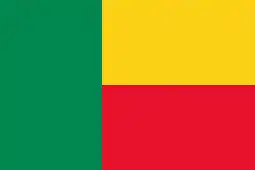 Dahomey →
Dahomey →  Benin in 1975
Benin in 1975 Dutch East Indies →
Dutch East Indies →  Indonesia in 1945
Indonesia in 1945%253B_Flag_of_Serbia_and_Montenegro_(2003%E2%80%932006).svg.png.webp) FR Yugoslavia →
FR Yugoslavia → %253B_Flag_of_Serbia_and_Montenegro_(2003%E2%80%932006).svg.png.webp) Serbia and Montenegro in 2003
Serbia and Montenegro in 2003 FYR Macedonia →
FYR Macedonia →  North Macedonia in 2019
North Macedonia in 2019 French Somaliland →
French Somaliland →  Djibouti in 1977
Djibouti in 1977.svg.png.webp) French Togoland →
French Togoland →  Togo in 1960
Togo in 1960.svg.png.webp) Gold Coast →
Gold Coast →  Ghana in 1957
Ghana in 1957 Irish Free State →
Irish Free State →  Ireland in 1936 →
Ireland in 1936 →  Republic of Ireland in 1954
Republic of Ireland in 1954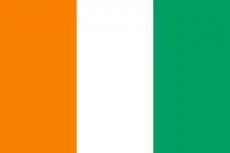 Ivory Coast →
Ivory Coast →  Côte d'Ivoire in 1983
Côte d'Ivoire in 1983.svg.png.webp) Kingdom of Serbs, Croats, and Slovenes →
Kingdom of Serbs, Croats, and Slovenes → .svg.png.webp) Yugoslavia in 1929
Yugoslavia in 1929 Madagascar →
Madagascar →  Malagasy Republic in 1958 →
Malagasy Republic in 1958 →  Madagascar in 1975
Madagascar in 1975 Middle Congo →
Middle Congo → 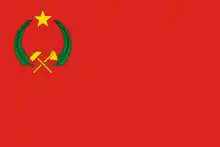 Congo-Brazzaville in 1960 →
Congo-Brazzaville in 1960 → 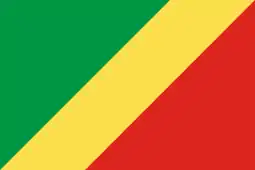 Congo in 1992
Congo in 1992 New Hebrides →
New Hebrides → 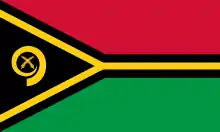 Vanuatu in 1980
Vanuatu in 1980.svg.png.webp) Northern Rhodesia →
Northern Rhodesia →  Zambia in 1964
Zambia in 1964.svg.png.webp) Nyasaland →
Nyasaland →  Malawi in 1966
Malawi in 1966 Portuguese Guinea →
Portuguese Guinea →  Guinea-Bissau in 1975
Guinea-Bissau in 1975 Russian Empire →
Russian Empire →  Soviet Union in 1923
Soviet Union in 1923.svg.png.webp) Southern Rhodesia →
Southern Rhodesia → .svg.png.webp) Rhodesia in 1964 →
Rhodesia in 1964 →  Zimbabwe in 1980
Zimbabwe in 1980 Surinam →
Surinam → .svg.png.webp) Suriname in 1954
Suriname in 1954 Swaziland →
Swaziland →  Eswatini in 2018
Eswatini in 2018.svg.png.webp) United Arab Republic →
United Arab Republic → .svg.png.webp) Egypt in 1971
Egypt in 1971 Upper Volta →
Upper Volta →  Burkina Faso in 1984
Burkina Faso in 1984 Western Samoa →
Western Samoa →  Samoa in 1996
Samoa in 1996
- Notes
See also
Notes
- Additionally 22 nations in Africa and Asia belong to the Union of Arab Football Associations (UAFA) in addition to their respective regional confederations.
- Guyana and Suriname are independent countries, and French Guiana is an overseas department and region of France
- The FIFA-affiliated football teams that belong to non-UN members are:
- 1 associated state of New Zealand
- 4 constituent countries of the United Kingdom
 Anguilla
Anguilla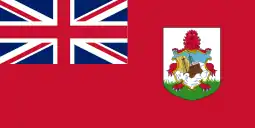 Bermuda
Bermuda British Virgin Islands
British Virgin Islands Cayman Islands
Cayman Islands Gibraltar
Gibraltar Montserrat
Montserrat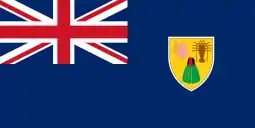 Turks and Caicos Islands
Turks and Caicos Islands
- 1 constituent country of the Kingdom of Denmark
- 4 unincorporated territories of the United States
- 2 overseas territories of France
References
- Brown, Michael. "Biggest Global Sports". Retrieved 11 September 2015.
- These are displayed in the main list in italics.
- "AFC and UAFA sign Memorandum of Understanding". AFC. 1 May 2015. Retrieved 5 December 2020.
- "Members". CONIFA. Retrieved 15 June 2018.
- http://nonfifafootball.blogspot.com/2013/04/interview-6-april-2013-palau-football.html
- "FIFA Statutes: July 2012 Edition" (PDF). FIFA. pp. Article 83. Retrieved 7 January 2013.
- http://websites.sportstg.com/get_file.cgi?id=36026860
- "World Cups and Beyond: Interview #6 (April 2013): Palau Football Asssociation president Charles Mitchell". 26 April 2013.
- Rogers, Martin. "Marshall Islands rare nation untouched by soccer's sprawling reach". USA Today. Retrieved 13 February 2019.
- "Nauru 2014". RSSSF. Retrieved 13 February 2019.
- "Abkhazia founds national football team". Vestnik Kavkaza. 3 December 2012. Retrieved 7 July 2016.
- "Archived copy". Archived from the original on 7 June 2014. Retrieved 10 June 2014.CS1 maint: archived copy as title (link)
- "Somaliland". wordpress.com. 31 July 2015. Retrieved 4 July 2016.
- "Non-FIFA Football Updates: South Ossetia make international bow in Abkhazia loss". nonfifafootball.blogspot.co.uk. Retrieved 4 July 2016.
- "Tournaments (Russian)". www.ffpmr.md/. 27 March 2018. Retrieved 11 April 2019.
- "Rankings".
- "CONIFA European Football Cup 2019: live draw announced!".
- "Transnistria". CONIFA. Retrieved 13 February 2019.
- https://books.google.com.mx/books?id=mYBtMajLAaAC&pg=PA276&dq=history+palestine+football+team&hl=es&sa=X&ved=2ahUKEwjVqv-7uIXtAhUNO60KHc0YDPcQ6AEwAnoECAcQAg#v=snippet&q=fifa%20palestine&f=false
- "FIFA Statutes" (PDF). FIFA. p. 4. Retrieved 12 April 2019.
- "FIFA Statutes" (PDF). FIFA. p. 11. Retrieved 10 September 2019.
- https://jurisprudence.tas-cas.org/Shared%20Documents/410.pdf
- Homewood, Brian. "Gibraltar, Kosovo accepted as members of FIFA". Reuters. Retrieved 17 May 2016.
- "Kosovo admitted as 55th member of European governing body UEFA". Sky Sports. Retrieved 3 May 2016.
- "Jersey: Uefa congress rejects application to become international football nation". 26 February 2018 – via www.bbc.com.
- https://www.washingtonpost.com/sports/soccer/caribbean-island-takes-fifa-to-court-to-join-world-soccer/2020/09/09/bb69f1e0-f2e7-11ea-8025-5d3489768ac8_story.html
- "Outcasts! The Lands That FIFA Forgot". outcasts-book.blogspot.com.
- "ConIFA aim to lead non-FIFA football forward". Back Page Football. Retrieved 10 June 2014.
- "Football Associations Members of the N.F.-Board". N.F.-Board. Retrieved 31 March 2016.
- Guardian Football Weekly. "Unai Emery unveiled, England's new captain and Liverpool's big final – Football Weekly Extra". Retrieved 30 May 2018.
- "Czech Republic Country Info". FIFA.com. Retrieved 18 July 2013.
- "Czech Republic - Profile". FIFA. Retrieved 18 July 2013.
- "World Cup Ends on Belgian Note". The Prague Post. Retrieved 18 July 2013.
- "Saarland 1950-1955". When Saturday Comes. Retrieved 18 July 2013.
- "Germany: When East and West became one". FIFA. Retrieved 18 July 2013.
- "(West) Germany - International Results". Rsssf. Retrieved 28 May 2019.
- Byrne, Peter (1996). Football Association of Ireland: 75 years. Dublin: Sportsworld. p. 68. ISBN 1-900110-06-7.
- http://www.rsssf.com/tablesi/iisabastatia.html
See also
List of FIFA members by the year of their membership
Sources
- "List of FIFA Associations". FIFA.
